![]() Are you ready to basically free fall with a piece of fiberglass pushing back to you as the force of gravity is sucking you down? Sure, you’ve been paddling; you’ve got good core strength, but what about the legs? Will you still be standing, and do you have the power to recoil your body to pump for the speed you need into the next turn?
Are you ready to basically free fall with a piece of fiberglass pushing back to you as the force of gravity is sucking you down? Sure, you’ve been paddling; you’ve got good core strength, but what about the legs? Will you still be standing, and do you have the power to recoil your body to pump for the speed you need into the next turn?
Gravity and surfing, water drag, board buoyancy and you, are all opposing forces that join you as you make your drop down the face of a small wave, or if you’re one of the few brave enough to step into the trough of JAWS. Being well- conditioned and strong, along with cat-like reactions can make you or break you.
Without getting too technical on the values of centripetal force, board speed, or if you’d like to learn what “C = gT/2LL” means, go to Leslie Brooks site and read more:
Getting Physical The Physics Behind Surfing, and read up on: C = Wave Speed g = Acceleration caused by gravity (9.8 Square meters per second) T =Wave Period L =Wave Length Test on Monday, so study!
Back to the “physical” aspect of what I do and know, I wanted to ask an expert! I had the pleasure of talking with Dave Kalama , big wave surfer here on Maui on the subject that fascinates me; how the g –force effects of gravity as you drop down the face of a wave and how you need your body, especially your legs to hold your line as gravity is pulling you down. He helped described to me the importance of training for leg strength for exactly this.
He said, “When you’re surfing down the face of a wave all muscles need to be firing at once. The slow twitch and fast twitch muscles must both engage.” As a trainer, I get this. An example of slow twitch muscles that tend to be smaller in size, slower to fatigue and if we get scientific, increases oxygen delivery, vs. fast twitch, larger muscles and quicker to fatigue and basically are considered the power house muscles of your body.
Slow twitch muscles also include stabilizing muscles. Think of endurance, running a marathon, swimming laps vs. a power lifter will have fast twitch muscles to utilize for big bouts of serious lifting. Here I’m talking about quick, explosive reps, but only lasting a few seconds. For this, think of glutes and quads.
He agreed that most people spend a great deal of time on core and upper body training; but reemphasized the need to spend even more time increasing your leg strength.
For example, Dave does a minimum of 200 leg lunges, max 400 to 500 consecutive. Then a few sets of leg dips and some quick paced step and jump lunges followed by jump squats. Plus running up the sand hill backwards really warms him up. He trains a great deal in soft sand and is a firm believer that your toes, feet and ankles play a key role for board and rail control.
Dave explained it like this, “One can have board and rail control, but then you need to call upon power to take advantage of the control. Then there is board speed. To get speed, you need to take advantage of the control and power. You’ll need to have powerful legs to pump the board to increase your speed. It’s all connected.”
Dave says, “If I had to pick any part of the body I’d train for surfing, it’d be legs over upper body. If you have bird legs it won’t do you much good.”
This makes good sense to me. I’ve seen Dave do some serious training here on Maui and it’s very inspiring. He also added that cycling is key to add to your training routine to help increase your power on big days.
Adding leg work to your routine seems easy enough, but its how you make the exercises extra challenging that be the ticket. There are lots of variables or things you can do to get those legs pumped up to help increase board speed.
Traditional squats, leg press and extension machines are great, but also add some plyometrics to the mix. Plyometrics is a term to describe the type of training that is explosive for speed and power. For example, I think of dropping down a wave I think of “Drop Jumping”. This exercise requires you to drop to the ground from a box or raised platform then immediately jumping up. I’d recommend starting on a platform that is not too high at first. Start with a 2 foot (24 inch) sturdy box, or simply standing on the ground and doing what I call tuck jumps. You can change the “variable” by changing the speed of the movement. Also, jumping over and object like a bench, cones or a log at the beach or park:
Here are some basic explosive 2 legged hops. Remember soft landings, not flat footed. Use your body to propel you up:
no images were found
Plyometric training can be worked into circuit training or can be as simple as skipping, hopping or bounding. Keep in mind this type of training is pretty intense and requires one to have a pretty decent base of leg strength, knee stabilization and hip stabilization, and no known orthopedic challenges.
I will line up 2 BOSUs in a row and have my clients use their own body’s inertia to hop up with two legs together as high as they can, land on the BOSU and then on to the next BOSU. To make it more interesting, I may fire an 8lb medicine ball at them to catch in mid air to test their reaction.
BOSU Jumps: Forwards and Laterals
no images were found
no images were found
A sample plyometric routine might look like this:
Drop Jumps: 5-10 medium intensity Rest: 45-60 seconds
Single Leg Step up to Bench with Dumb Bells: 10 -12 each leg
Single leg lunges with dumbbells. I’m using 20lb each.
Lunges: no images were found
2 legged hops from Standing Position over bench, cone or other object: 10-12
Lateral or Forward 2 legged hop up to BOSU or across 10-12
Repeat 2-3 times. To increase intensity, reduce rest period, add more weight, increase drop box/bench height.
Or, take one of these exercises and work it into your regular training routines.
Pre Conditioning: As mentioned earlier, this type of training, requires a solid base of strength training, supportive athletic shoes and should be performed on padded surfaces such as grass or the beach, or in a padded area to absorb some of the shock.
Proper active or dynamic stretching should also be performed before your routine and of course the proper cool down to follow. I’d allow 2-3 days for recovery in-between a plyometric session.
To recap, surfing is the ultimate sport that demands so much of the body and if you want to be good, go deep and drive into the next turn, you better have the legs to do it. This type of training is also excellent for stand up paddling small and big waves!
Cycling, plyometrics, soft sand running, lots of lunges, weight training is a great way to be ready for the action.
You can check out a few more of my “surf fit tips at: https://suzietrainsmaui.com/surf-sup-windsurf-conditioning-training-tips/
Thanks again Dave for adding to the topic! I hope you found this helpful and informative. We’ve just touched upon the very simple aspects of leg training for surfing here. If you want more information or want to train with me personally, let’s do it!
I encourage to you to share your experiences, tips and big wave adventures with us. Also, to learn more about Dave Kalama go to: https://www.davidkalama.com/
Also stay tuned for my SUP/Fitness Adventure clinic in Costa Rica next year.
Aloha and see you on the water! Suzie Cooney, CPT
Suzie Trains Maui
Suzie is wearing the Olukai Kia’i’ Trainer https://www.olukai.com/Product_WomensMakai_Kia’i%20Trainer_20127-3049.aspx
All photos and jewelry by Simone Reddingius. Check out more of her work at:
https://www.flickr.com/photos/by-simone/
Check out ![]() ATHLETA’s sporty cap, “Morning Run”
ATHLETA’s sporty cap, “Morning Run”
Sunglasses: https://kaenon.com/

To see Naish’s new line for 2011 go to: https://www.naishsurfing.com

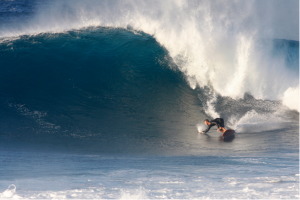
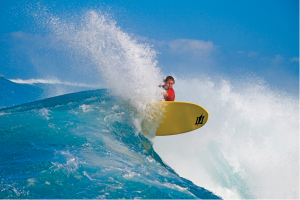
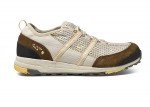

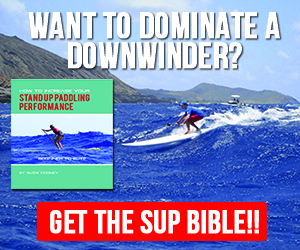

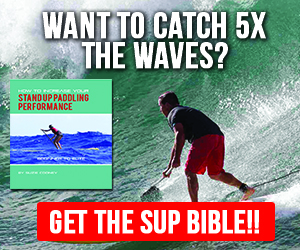
In January, the surf is on the north shore, so that means the Turtle Bay Resort. It is the hotel that was used in the recent film Leaving Sarah Marshall . There is not much night life on the north shore touhgh. You might need to break up your vacation spend a few nights at Turtle Bay a few nights in Waikiki. But any novice surfers need to be very cautious about surfing on the north shore in January. They might be better off in Waikiki.